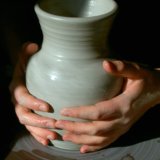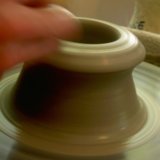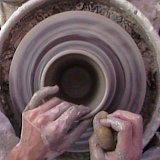|
Gas Fired Pottery KilnThe gas fired pottery kiln is a cleaner burning, modern version of the wood fired pottery kiln. The fuel is easier to come by and easier to control than wood. It also offers many of the same opportunities for rich, organic surfaces for your pottery glazes. These kilns typically use one or more gas fired kiln burners such as a Venturi burner hooked up to natural gas or propane. The Olympic Torch Bearer kilns are examples of a gas fired kilns. They come in down draft or up draft. Up draft means the heat is introduced into the kiln from the bottom and travels up and out the top. Down draft means the heat is drawn out of the bottom of the kiln. A car kiln is a design in which the pots are loaded onto a "car" or rolling platform. This car is then moved into the kiln to be fired. Often the kiln will a movable door or one that is attached to the car and moves into place when the car is moved into the kiln. In both wood and gas kilns, minerals such as salt and soda are often introduced toward the end of the firing. The minerals vaporize in the heat and are carried throughout the kiln and deposited on the pots to create special effects in the pottery glazes. Fuel burning kilns can also be fired in "reduction". Reduction is when the amount of oxygen allowed into the kiln is restricted. When this happens, the fuel in the kiln seeks out oxygen from the pots and other objects in the kiln. The oxygen-starved fuels will pull oxygen from glazes containing oxides, such as iron oxide, changing the makeup, and thereby, the color and surface of the glaze.
|
Learn Right
The First Time
Pottery on the Wheel for Beginners
is a complete beginners guide
to learning pottery.
It will
take you from
never having touched clay
to creating finished pottery
you can use every day.
Also read it on Kindle
Featured Pages
Choose Your Wheel
Thank you so much for
visiting my website!
Discover How I Made It!
Happy Potting!
- Steve










